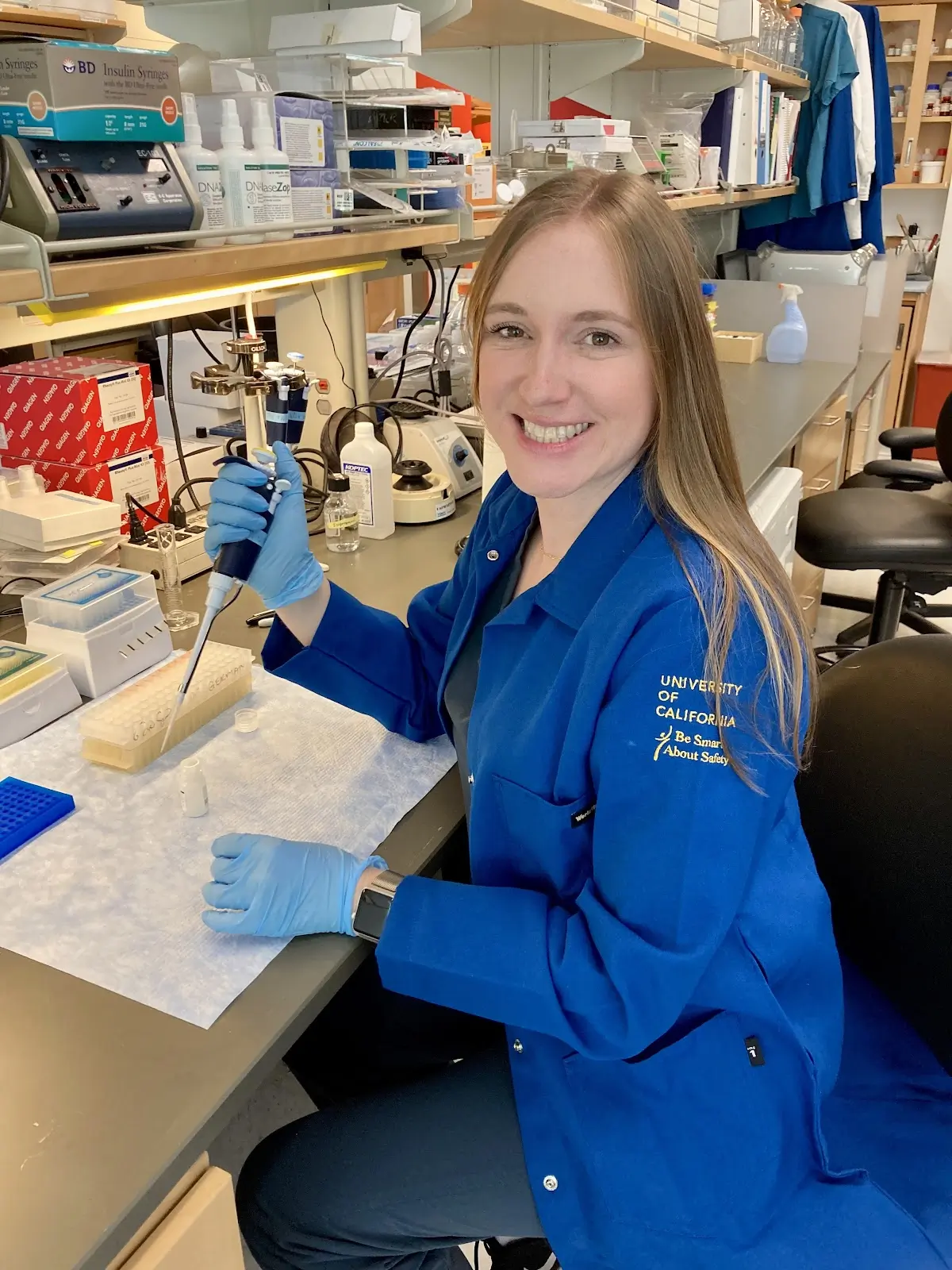Final Project Update
We have successfully completed the study as planned. Twelve participants with type 1 diabetes (T1D) on insulin therapy underwent baseline testing and then received a four-week treatment with a sodium-glucose cotransporter-2 inhibitor (SGLT2i) and a four-week treatment with a combination of the SGLT2i and a glucagon receptor antagonist (GRA), in addition to insulin. We analyzed the data to evaluate the effect of each treatment on blood glucose control, insulin dosing, and risk for cardiovascular disease and diabetic ketoacidosis (DKA).
The participants’ average age was 38 years (range 25-65), body mass index was 26 (range 22-30), and A1c was 6.7% (range 5.5-8%). Seven of the participants were female, and all participants self-identified as White non-Hispanic. Compared to baseline, both treatments significantly improved CGM average glucose and time-in-range (glucose 70-180 mg/dl), without increasing hypoglycemia (glucose <70 mg/dl). Combination therapy (SGLT2i+GRA) led to a greater improvement in time-in-range than the SGLT2i-only treatment. The amount of insulin used by participants decreased progressively from baseline (insulin alone), to SGLT2i, to SGLT2i+GRA t. We used insulin withdrawal tests (IWT) to see how the treatments affect ketone body production when insulin was stopped for up to 8 hours. Compared to baseline (insulin only), SGLT2i treatment increased ketone levels during the IWT (suggesting an increased risk of DKA). The addition of the GRA (SGLT2i+GRA) reduced ketone levels back to those achieved during baseline testing (suggesting the GRA may help protect against DKA). In the cardiovascular studies, we detected no consistent differences between baseline and the SGLT2i or SGLT2i+GRA therapies. All treatments were safe and well-tolerated during the study period, and no participant withdrew early from the study.
In summary, SGLT2i and combination SGLT2i+GRA treatments improved glycemic control and reduced insulin dosing in T1D. The addition of the GRA may improve the safety profile of the SGLT2i by reducing ketone formation when insulin is absent. Finally, the effect of non-insulin therapies on cardiovascular outcomes in T1D remains unclear, and further research is needed. The findings from this study will be submitted for publication and will promote further work in the area of non-insulin therapies for T1D.
Click HERE to see Dr. Boeder’s Complete Update
6-Month Project Update
This study is designed as a cross-over trial that will include 12 participants with type 1 diabetes. In addition to insulin, each participant will receive a four-week treatment with a sodium-glucose cotransporter-2 (SGLT2) inhibitor medication and a four-week treatment with a combination of the SGLT2 inhibitor and a glucagon receptor antagonist (GRA) medication. This will be done in a ‘double-blind, randomized’ fashion, which means the order of treatments will be random and neither the participant nor the researchers will know which treatment is being given each period. The study will evaluate the effects of each treatment on blood glucose control (based on continuous glucose monitoring), insulin dosing needs, weight loss, vascular function, and risk for diabetic ketoacidosis (DKA).
We are pleased to report that the study is progressing as planned. Our first participant was enrolled in May 2021, and our final participant was enrolled in late October 2021. The final clinical visit for the final participant is scheduled for February 2022. The treatments have been safe and well-tolerated thus far, and no participant has withdrawn early from the study. Although we will not unblind the data and analyze the result until the study is completed, we have noted an improvement in blood glucose control and a clear reduction in insulin dosing requirements in the treatment groups. We believe the vascular and ketone studies will provide valuable insight as well. We look forward to sharing the full results in 2022.
I am optimistic that the findings of this trial will support our application for NIH grant funding for larger studies in this area. Thank you!
Project Description
Type 1 diabetes (T1D) is a disease of multiple hormonal and metabolic impairments. In addition to deficient insulin secretion from the pancreas, T1D patients experience insulin resistance, increased risk of cardiovascular disease, increased glucose reabsorption by the kidneys, and other abnormalities that are not directly addressed by current treatments. There is a clear need for medications that can be used alongside insulin to simultaneously improve glycemic control and target other metabolic abnormalities. This clinical trial, conducted at the University of California – San Diego, will test combining two non-insulin therapies with insulin therapy to improve glucose control (measured by continuous glucose monitoring), reduce insulin needs, and improve markers of cardiovascular disease (blood tests and noninvasive measures of vascular function).
The first medication included in this trial is a sodium-glucose cotransporter-2 (SGLT2) inhibitor. This class of medications is FDA-approved for people with type 2 diabetes. In this population, the SGLT2 inhibitors improve blood glucose, lead to weight loss, and help protect the heart and kidneys. We hypothesize that SGLT2 inhibitors may provide the same benefits to people with T1D, however these medications increase the risk of diabetic ketoacidosis (DKA), a dangerous acute complication of diabetes that occurs when there is insufficient insulin in the body.
The second medication included in this trial is a glucagon receptor antagonist (GRA), which blocks the action of the glucagon hormone. In T1D, glucagon levels are abnormally elevated after meals, which worsens blood glucose and increases the amount of insulin needed to maintain glucose control. By blocking glucagon, the GRA lowers blood glucose levels and decreases insulin dosing needs. Our preliminary data suggest that the GRA also decreases ketone body formation and therefore may help prevent DKA. The central hypothesis of this trial is that combination therapy with both the SGLT2 inhibitor and the GRA medication will lead to significant metabolic benefits including: better glucose control, reduced insulin use, weight loss, and potentially improved markers of cardiovascular function, while concurrently lowering the risk of DKA.
Despite advances in insulin treatments and diabetes technologies, there remains a significant need for add-on non-insulin therapies for use in T1D. We believe this study is likely to be successful and will open up an entirely new avenue of combined metabolic therapies for patients living with T1D.








